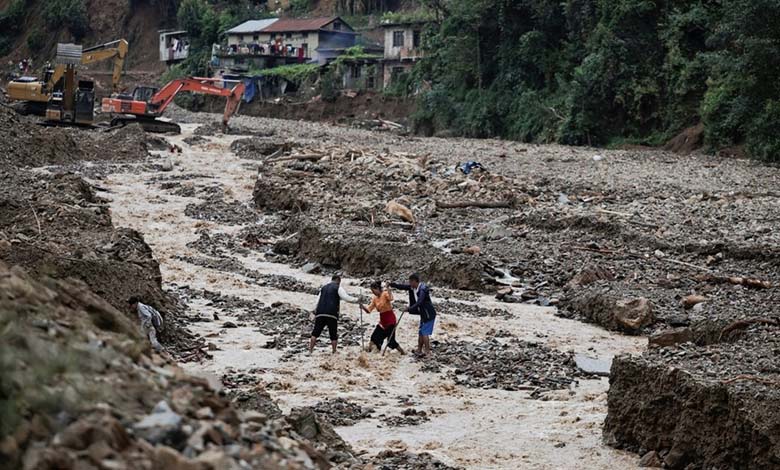Due to climate change, “glacial lakes” threaten villages in Nepal

On August 16, floods hit the Nepalese village of “Thame,” near Mount Everest, after a glacial lake collapsed due to global warming. The disaster destroyed half of the homes, including a school built by Tenzing Norgay, the first mountain guide to summit Everest with New Zealander Edmund Hillary in 1953. Fortunately, no fatalities were reported, but the villagers lost their belongings.
-
Devastating Floods in Bosnia Claim the Lives of 14 People
-
13 dead and dozens injured in violent floods in Afghanistan
The floods were caused by a glacial lake situated at an altitude of 3,800 meters, a type of lake formed from melting ice. The natural barrier holding the water can collapse suddenly, leading to catastrophic floods. With the accelerating climate change, ice in the Himalayas is melting at dangerous rates, increasing the likelihood of similar collapses.
In October 2023, the collapse of a glacial lake in northeastern India resulted in the deaths of over 70 people. Additionally, floods hit Kathmandu and its surrounding area, killing more than 230 people and causing widespread destruction. These events serve as a reminder of the fragility of Nepal’s mountainous regions in the face of climate change impacts.
-
Tragedy in Iran: 13 People, Including Children, Lost Due to Floods in the South of the Country
-
Due to the floods… 192 people perish in Nepal
Since the recent floods, many Thame residents have sought refuge in nearby villages or moved to the capital, Kathmandu, having lost everything. They say: “The ground is unstable, and we don’t dare return,” pointing out the presence of other lakes higher up, which adds to the potential risks.
While reconstruction efforts are underway, significant challenges remain, particularly with the disappearance of fertile land.
-
Thailand Executes 125 Crocodiles Due to Floods
-
Czech President Intervenes to Repair Infrastructure After Floods
Glacial lakes in the Himalayas are not rare, with over 2,000 lakes, according to the International Centre for Integrated Mountain Development (ICIMOD). Among them, 21 lakes are considered dangerous to nearby populations.
Scientists rely on satellite images to monitor these lakes, but they emphasize the need to strengthen monitoring systems and early warning mechanisms to alert locals and better prepare for hazards.
“Thame,” known as the “village of climbers,” is home to some of the most famous mountaineers, such as Kami Rita Sherpa, who has summited Everest 30 times. However, Kami Rita points out that the village’s future is now uncertain amid these dangers, stating: “The entire region is at risk, not just Thame,” emphasizing the need for action to address climate change, which has become a tangible reality in the Himalayas.












